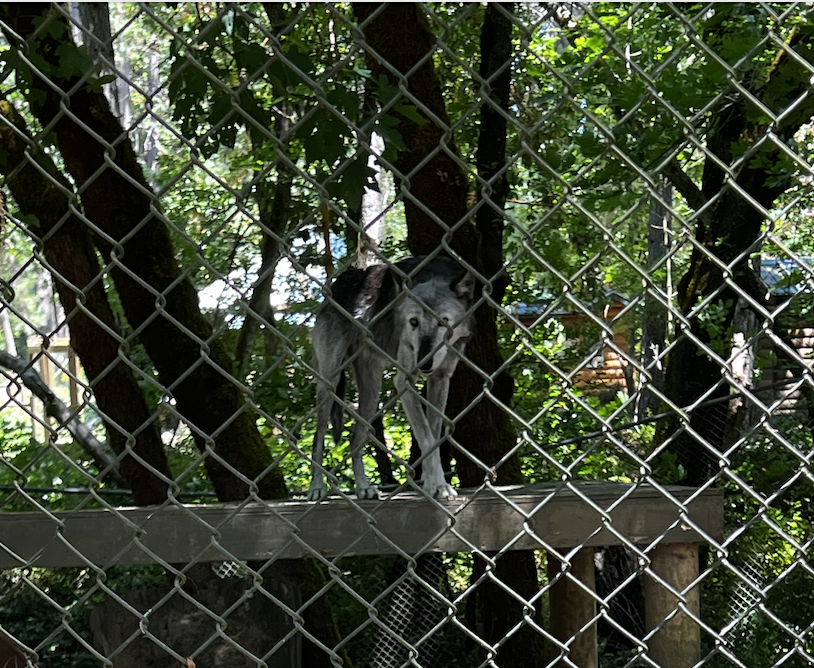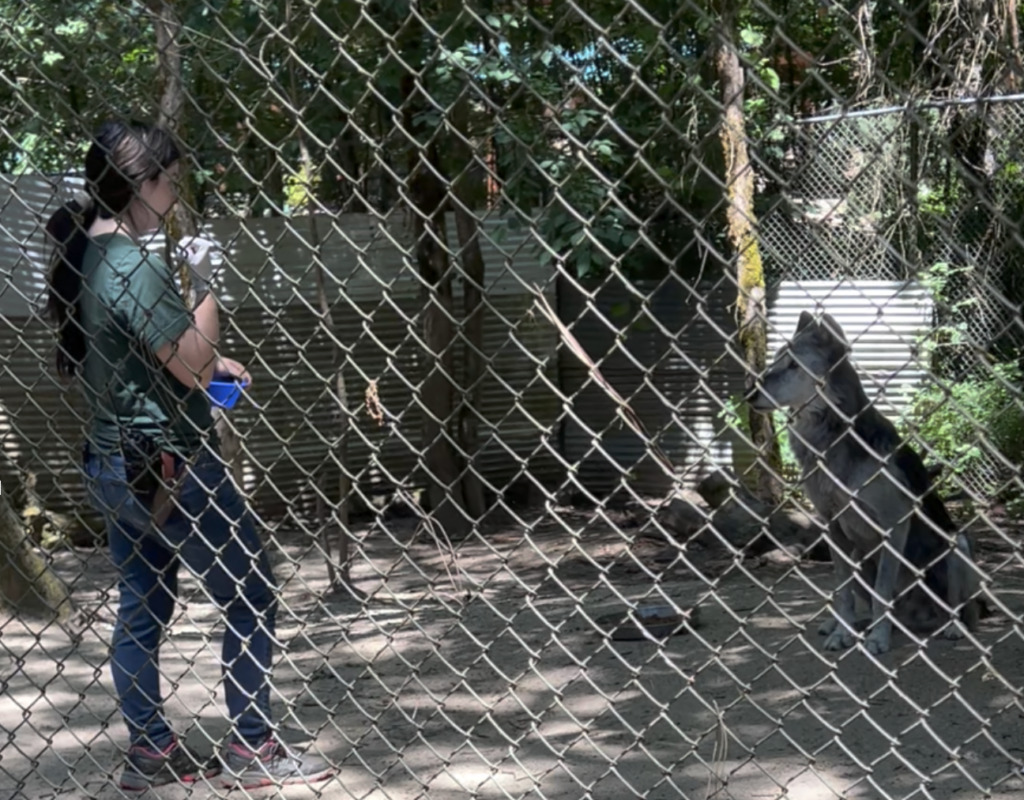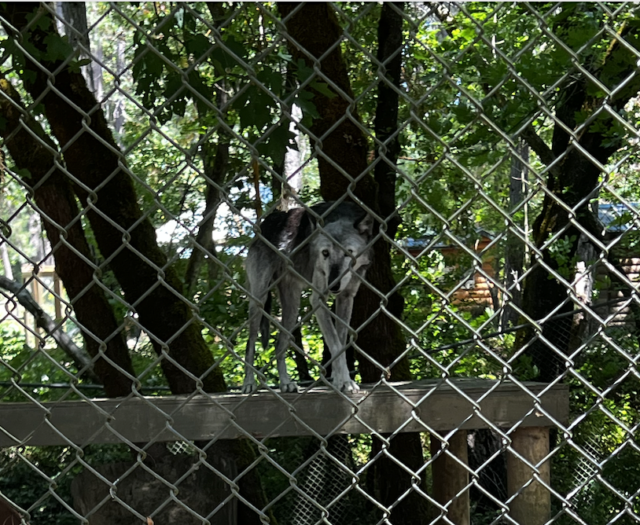
After just two days at a wildlife rehabilitation center in peri-rural Oregon, I was reminded in a very beautiful way of the importance of choice for an animal living in captive wildlife care. The centering and consideration of animals’ choices and preferences in all aspects of husbandry, training, and care is essential for maintaining a standard of ethical captivity.
“Can you come help me with the pups?” I heard someone ask my supervisor. Though the pair of high-content wolf hybrids were fully grown and no longer pups, they were fondly referred to as such. Perhaps because they were raised by the people working at the center.
It would seem that captivity and choice are mutually exclusive. The concept of captivity involves the restriction of freedom to range through space in a way that in some regards precludes consent. Nonetheless there are institutions that acknowledge this and, within the limitations of captivity, prioritize the choices and preferences of the non-human animals in their care.
And the people who work at these places—which are the exception to the rule in the world of animal captivity—do this because they love these animals. They have rescued them from the jaws of human-caused problems, raised them from infancy, and done whatever they can to ensure that they have the best emotional, mental, and physical experiences possible. They want to do the best by these animals. And thus, these unique places are able to look at themselves and at their own operations, to be critical and to self-edit. To listen to the cues of animals telling them that they do or do not want to participate. To let that animal be the agent of choice in the relationship.
What I saw on my second day really brought home for me the relationship between a strong emotional commitment to captive animals and the robust consideration of their choice and preference. That these wolves were called “pups” was not a sign of their being infantilized. Rather, it indicated a relationship of acknowledgment and care on the basis of which their preference became part of a human/non-human dialogue.
The two wolves, Tako and Rogue, were participating in socialization, which involved “doing tactiles”– in layperson’s terms, petting and scratching. Taco participated fully throughout the entire session. Rogue, on the other hand, alternated between participation and non-participation. And this was respected. Rogue led her own session and set the terms for it. Her choice was centered throughout.

